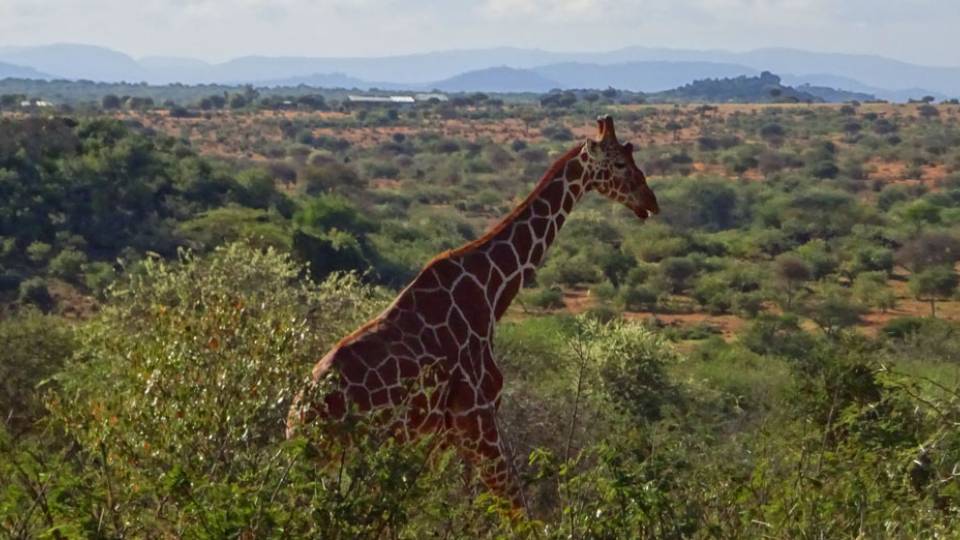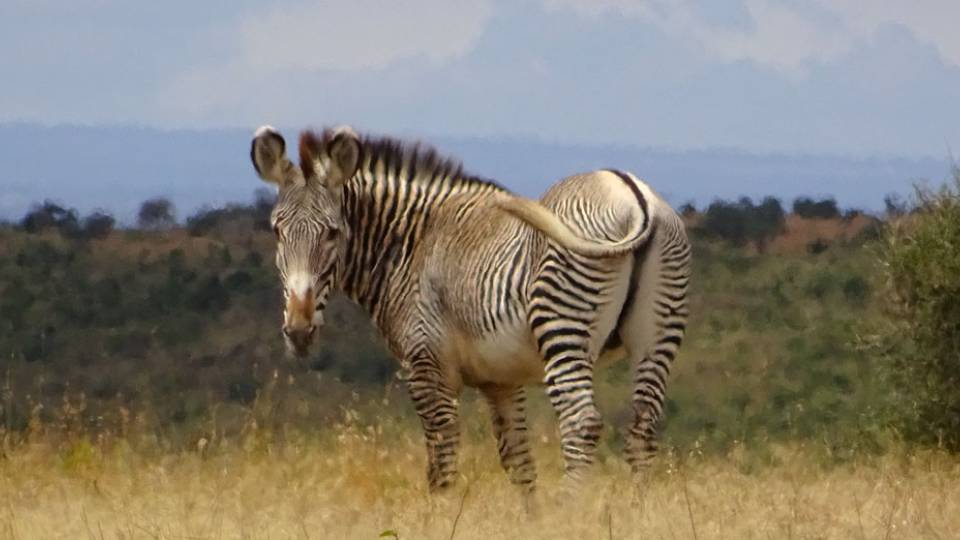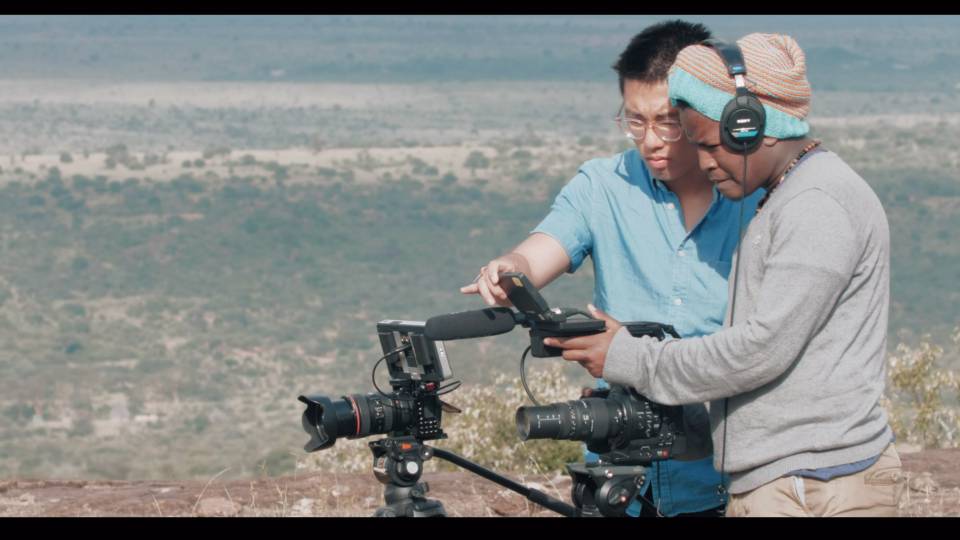Princeton is celebrating its 25th anniversary of teaching, research and collaboration at Mpala Research Centre in Kenya, while looking to deepening its engagement for the future.
This year, Princeton University is celebrating its 25th anniversary of research, teaching and collaboration at the Mpala Research Centre(Link is external) in Laikipia County, Kenya, while looking toward deepening engagement for the future.
Mpala, an independent Kenyan nonprofit, comprises 48,000 acres of privately owned conservation lands managed by the University in partnership with the Smithsonian Institution, the National Museums of Kenya and the Kenya Wildlife Service.
“Mpala is one of the world’s leading field-based research centers for the study of ecology, conservation, public health and sustainable development,” said Aly Kassam-Remtulla, vice provost for international affairs and operations (acting). “It offers a unique opportunity for Kenyan and international scholars to conduct experiments on a landscape scale. It also has unique resources including the first field-based genomics laboratory in Africa. As we mark our silver anniversary, we see opportunities for greater engagement of Princeton students and scholars, African scientists and conservationists, and many other neighbors and partners in the Laikipia region.” Watch a documentary(Link is external) on Mpala.
Located on the savannahs stretching north of Mount Kenya, Mpala is a living laboratory with an expansive and diverse natural terrain teeming with wildlife, including elephants, giraffes, lions, leopards, Grévy’s zebras and hundreds of bird species.

Mpala comprises 48,000 acres of conserved land in Laikipia County, Kenya.
A portion of the reserve is devoted to grazing lands for small-scale ranchers and farmers in the surrounding communities to raise cash and subsistence crops.
The wildlife-human connection is a crucial area of engagement for the center, where large-scale field experiments happen alongside educational experiences that bring together Princeton and Kenyan students.
“What goes on in Mpala exemplifies perfectly what we aim at here at Princeton, which is a seamless blending of teaching and research with faculty and students working together,” Princeton President Christopher L. Eisgruber said in a recent documentary about Mpala. “One of the genuinely special things about Mpala is the way that it takes students out of the world that they’ve known and exposes them to things that are utterly different, and some of that is about what it means to do research on the ground in a place unlike where they’ve been before.”
The vision for Mpala is to deepen the work in science and conservation, further engage scholars in the humanities, social sciences and engineering, and to boost education, research and engagement opportunities for Kenyans and scientists from other parts of Africa. To help support these initiatives, the infrastructure of the site also will need to be enhanced, such as adding solar panels, water collection, storage and treatment systems, additional laboratory infrastructure, and enhanced high-speed internet access.
“I see a future of Mpala where we robustly engage in solving the problems that we face, whether in Africa or globally, by bringing the brilliance and passion and curiosity of students and scientists from around the world to really make a difference,” said Dino Martins, Mpala’s executive director who is also a lecturer and visiting research scholar in ecology and evolutionary biology.
Princeton students interested in conservation, ecology, biology and anthropology have long benefited from the chance to study at Mpala as part of courses or for research projects.

Dan Rubenstein (center), Princeton’s Class of 1877 Professor of Zoology and professor of ecology and evolutionary biology, has had a long association with Mpala. His research on the endangered Grévy’s zebra has shown that the animals benefit livestock by eating the rough grass stems and seeds that cattle cannot digest, despite the widely held belief that the zebras compete with livestock for scarce food resources.
“Teaching in the field is completely different from teaching on campus,” said Dan Rubenstein, the Class of 1877 Professor of Zoology and professor of ecology and evolutionary biology(Link is external) and director of the Program in Environmental Studies(Link is external), who has had an extensive association with Mpala. “When they [students] come to a field setting, it’s total immersion from dawn ’til way after dusk. And we become partners in generating knowledge.”
In 1989, George Small of the Class of 1943 approached the University about establishing a research center on the large ranch he inherited from his brother. Since then, Princeton faculty and students have studied biodiversity, climate change, conservation, ecology, water use and other topics in partnership with local scientists and residents. Mpala is a dynamic ecosystem with arid grasslands as well as lush riverside woodlands, where researchers can study environmental pressures and the impacts of climate change. Such findings can help inform regional governments and organizations about measures to help protect the environment in East Africa and beyond.

Among research projects at Mpala is using DNA analysis of animal fecal samples, including from elephants, to illuminate links between environment, diet and gut microbes.
Further, Mpala helps build connections with the wider community through education as well as efforts such as a county-wide rabies vaccination program for dogs, with the goal of eradicating this deadly disease from the landscape, protecting people, livestock and wildlife. Residents also have actively participated in the center’s research. A particularly illustrative example is the “Great Grévy’s Rally,” in which Rubenstein and other scientists engaged volunteers to spot the endangered Grévy’s zebra to learn more about its population and range.
Scientific research at Mpala spans numerous endeavors, including studying how termite mounds store nutrients and moisture, thus helping prevent the spread of deserts; using DNA to learn how multiple species of plant-eating animals can coexist in the same habitat with the same food sources, with implications for conservation; and how wildlife and cattle can be partners, not enemies, in the search for food, which could help stem the encroachment of cattle ranching on wildlife habitat.

The Department of Ecology and Evolutionary Biology offers a four-course program on tropical biology and sustainability at Mpala and other sites in Kenya.
Raised in Kenya, Kennedy Saitoti Omufwoko studied in Mpala and at the University of Nairobi before coming to Princeton to pursue a Ph.D. in ecology and evolutionary biology. He’s building on his research on ecological perspectives on bees.
“Mpala is a very big shaping part of my life. It’s where I really gathered a lot of my research experience,” Saitoti said. “I’m studying the evolution of social behavior in bees. … Princeton offered one of those labs that actually was looking into that. It was a perfect match for me.”
The possibilities for learning at Mpala extend to Princeton students no matter their academic concentrations. For example, the Holly and Henry Wendt, Class of 1955, Global Seminar, “Documentary Filmmaking in Kenya: Visual Storytelling on Wildlife and Wildlands Conservation,” invited undergraduates to shoot short films. Additionally, the anthropology course “Human Evolution” has visited Mpala to study the local culture and how humans have interacted with the wildlife and climate in the area for thousands of years.

As part of the anthropology course “Human Evolution,” Princeton students visit residents of II Motiok, one of several group homesteads situated on the Naibunga Conservancy on the northern border of Mpala.
Paula Kahumbu, who grew up in Kenya, earned her Ph.D. in ecology and evolutionary biology from Princeton in 2002. She visited Mpala as a graduate student and now teaches at the center and leads conservation efforts in Kenya as CEO of the nonprofit WildlifeDirect.
“There was no center, we camped by the riverside, we cooked our own meals, we slept in little pup tents, and it was amazing,” Kahumbu said of her first visit. “The place was teeming with wildlife. Since then it’s been really exciting to see how it’s blossomed into this international institution that is providing a base for African scientists who can interact with scientists all over the world.”
After graduating from Princeton in 2017 with a degree in ecology and evolutionary biology, Zoe Sims spent a year at Mpala on a Princeton in Africa fellowship. “As human beings, we are part of our ecosystems, everywhere we are,” she said. “I find that being here at Mpala, in Kenya, I’m more acutely aware of that fact — partly because every morning I wake up to the sound of guinea fowl in the bushes outside my room, and many days I go to sleep at night to the sound of hyenas in the distance calling to each other,” she said. “All of these things are just these reminders that I am part of nature.”
Anniversary events were held at Mpala in June, Princeton this November, and are forthcoming in Chicago, Florida, London and Nairobi.

Students reach the top of Mt. Mukenya, the highest point on the Mpala ranch.






